
When you step into a home for a walk-through, it’s easy to get caught up in the charm of a fresh paint job, trendy décor, or that dreamy kitchen island. But seasoned real estate experts know that sellers sometimes stage with strategy, quietly steering your eyes away from problems that could cost you thousands later.
From water stains that whisper of roof leaks to mysteriously locked rooms that practically shout “don’t look here,” the red flags are often subtle—but they’re there. Spotting these warning signs early can save you from unpleasant surprises, stalled negotiations, and expensive repairs after closing. Consider this your insider’s checklist: 27 red flags sellers hope you’ll overlook, but savvy buyers won’t.
27. Fresh paint “patches” or one-off newly painted ceilings
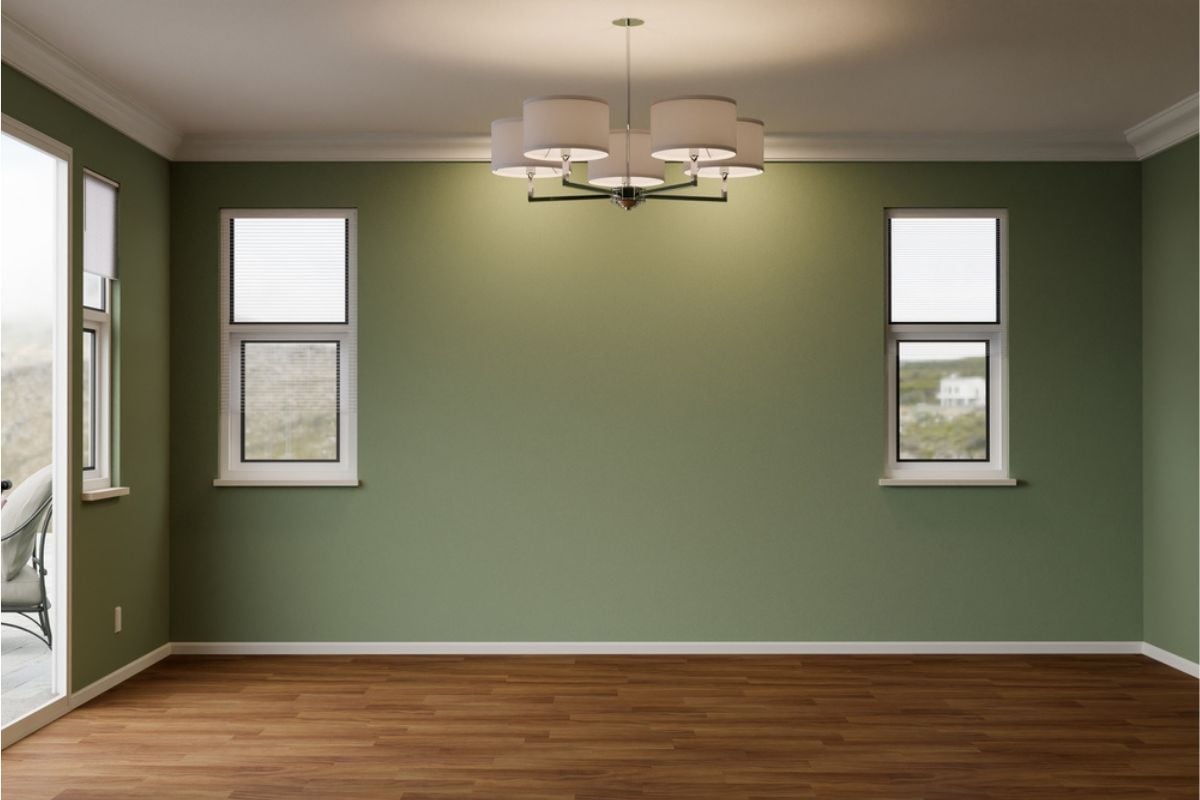
Spot painting is often less about aesthetics and more about concealment, especially when a single wall or ceiling panel looks suspiciously fresher than everything around it. Sellers may be covering up prior leaks, nicotine staining, or hairline cracks that suggest movement.
Run your eye along the sheen—mismatched gloss levels and hard edges where a roller stopped are classic tells. If you see a bright island of paint in a sea of patina, ask for the story and look above, behind, and around it for the cause.
26. Heavy scents or windows flung open in odd weather
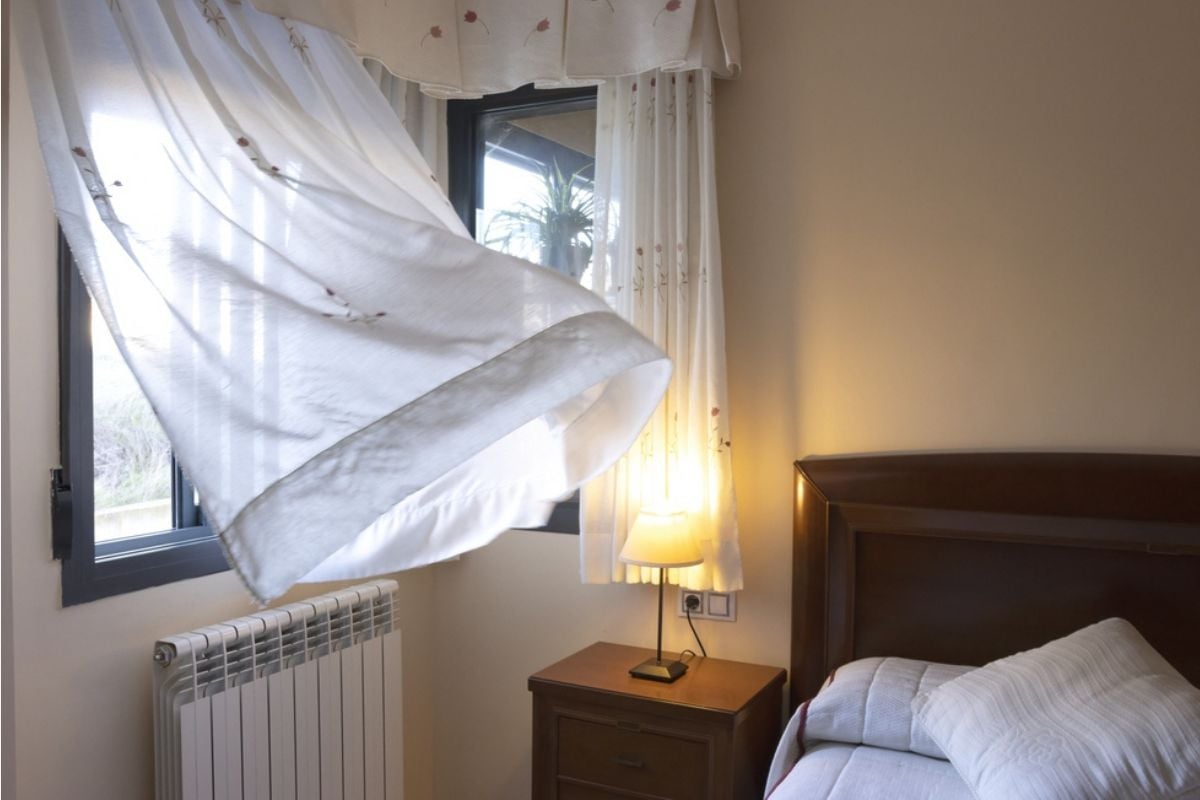
When a house smells like a candle shop or all the windows are open on a cold, rainy day, the seller might be masking pet odors, mildew, or a plumbing vent problem. Strong fragrances linger on surfaces and can temporarily overwhelm your nose, delaying detection until the scent dissipates.
Step into closets, closed bedrooms, and the basement where smells are harder to hide. If the air feels drafty without a good reason, assume there’s a reason—and try to find it.
25. Dehumidifiers or box fans running during the showing

A dehumidifier humming in shoulder season or fans pointed at a baseboard can hint at chronic moisture or a very recent “cleanup.” While these tools are normal for damp-prone regions, strategic placement in a corner or crawlspace access is a different story.
Check for rust on appliances, swollen trim, and cupped hardwood that betray prolonged humidity. If the home needs machines to feel dry for a one-hour showing, imagine what it’s like on a rainy week.
24. Water stains, rippled drywall, or ceiling bubbles

Brown halos, wrinkled paint film, and pillowy drywall indicate that water has been where it shouldn’t. Even if a roof or plumbing leak was repaired, the substrate may still be compromised and mold-friendly.
Press gently near suspect areas—softness means deterioration and possible rework. Pair ceiling stains with a floor plan check above to see if a bathroom, laundry, or roof penetration aligns.
23. Efflorescence or fresh mortar lines on foundation walls

Crusty white salts on masonry signal moisture wicking through the wall and evaporating into the basement air. New tuckpointing or isolated mortar “band-aids” can be honest maintenance, but they can also be a quick cover for cracks.
Follow any vertical or diagonal lines to see if they widen, offset, or repeat at corners. If the foundation looks recently “makeup-ed,” ask for invoices and the scope of work, not just reassurances.
22. Sloping floors, doors that stick, or cracked grout patterns
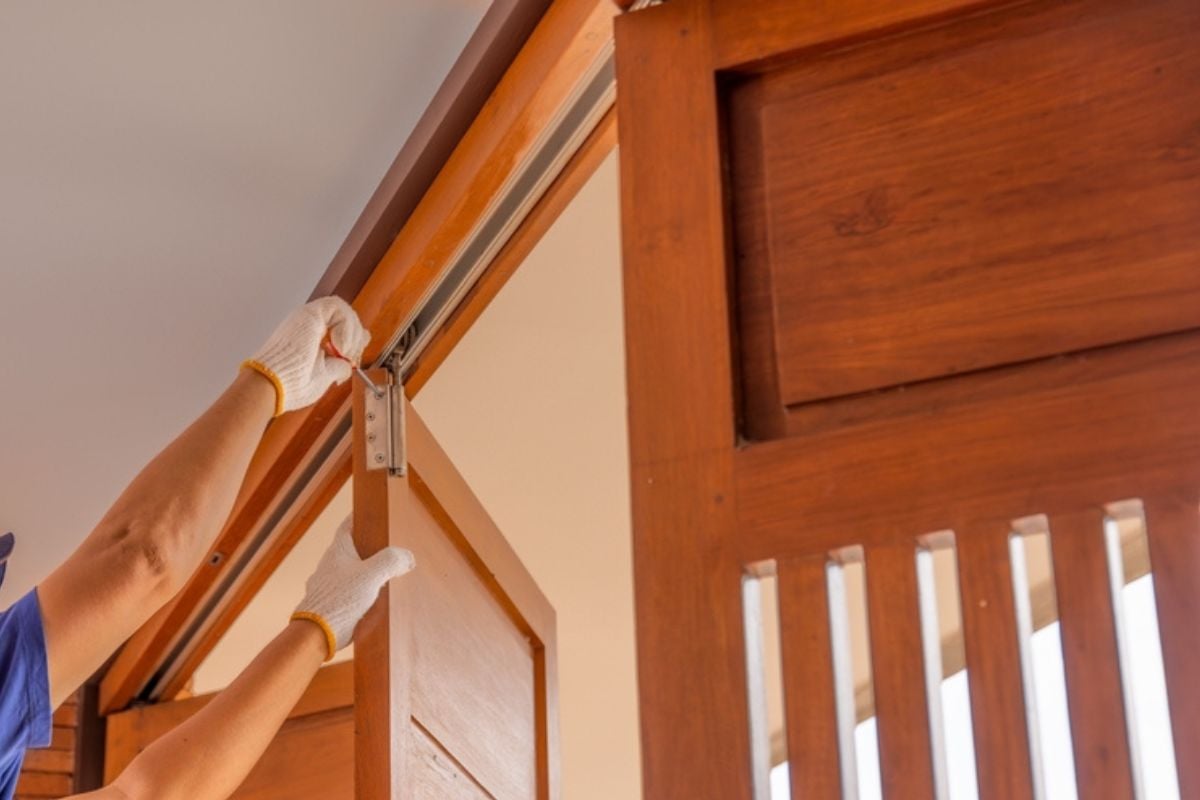
Floors that roll, doors that bite into their jambs, and grout fissures that line up across rooms often point to settlement or joist issues rather than cosmetic quirks.
A small slope in an old house can be normal, but consistent tilt near bearing walls deserves attention. Open and close every interior door and watch the reveals for tapering, which hints at racking. If tile cracks form a map, they might be charting movement beneath your feet.
21. Stair-step cracks in brick/stucco and sagging lintels
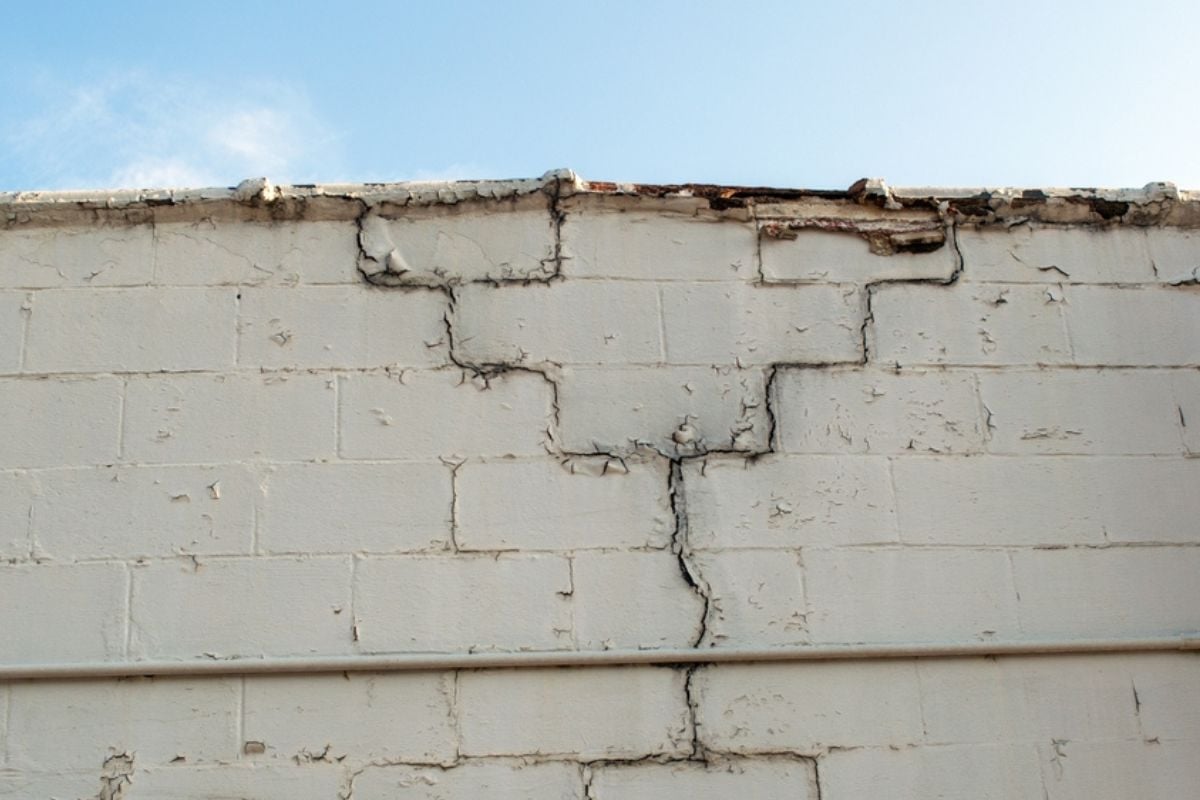
Mortar joints that crack in a stair-step pattern typically trace the path of least resistance as a wall moves. Combine that with sagging or rusting lintels over windows, and you may be looking at structural or water management problems.
Hairline shrinkage is common; thick, offset, or newly caulked cracks are not. Sight along the header of openings—if they bell downward, budget for masonry and potentially foundation evaluation.
20. Roof patchwork, curling shingles, or granules piled in gutters

Shingles that change color mid-slope or a quilt of tabs around penetrations indicate piecemeal repairs rather than a coherent roofing plan. Curling or cupping shingles are at the end of their life, and heaps of granules in gutters mean the protective surface is washing away.
Look for exposed nail heads, improvised sealant blobs, and flashing that doesn’t step properly. A roof nearing replacement affects insurance, appraisal, and your first-year maintenance budget.
19. Negative grading, short downspouts, or soggy soil near the house
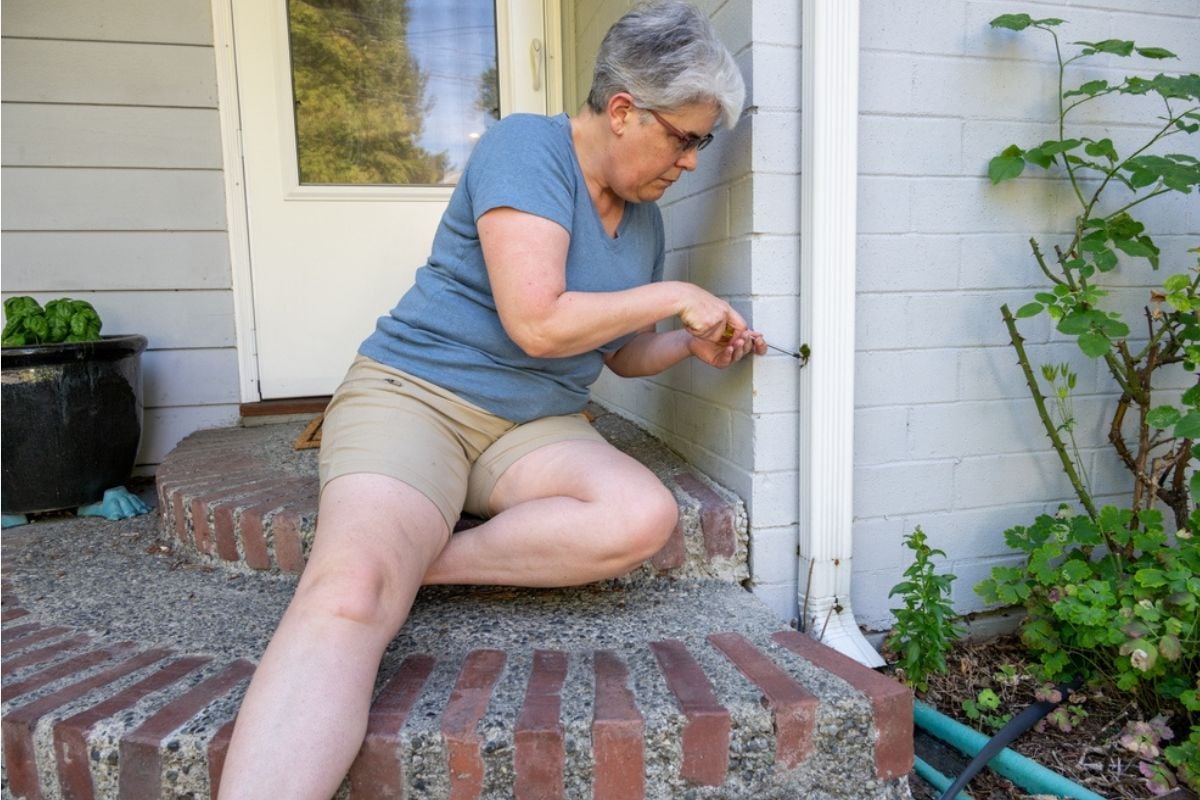
Water is a home’s most persistent enemy, and any landscape that slopes toward the foundation is an engraved invitation. Downspouts that dump at the base of the wall or soil that squishes after a dry week suggest chronic drainage neglect.
Check mulch beds for “tidied” surfaces hiding low spots and splashback on siding. Correcting grading is doable; correcting the damage water already did inside can be the expensive part.
18. Attic access blocked, painted shut, or “do not enter”
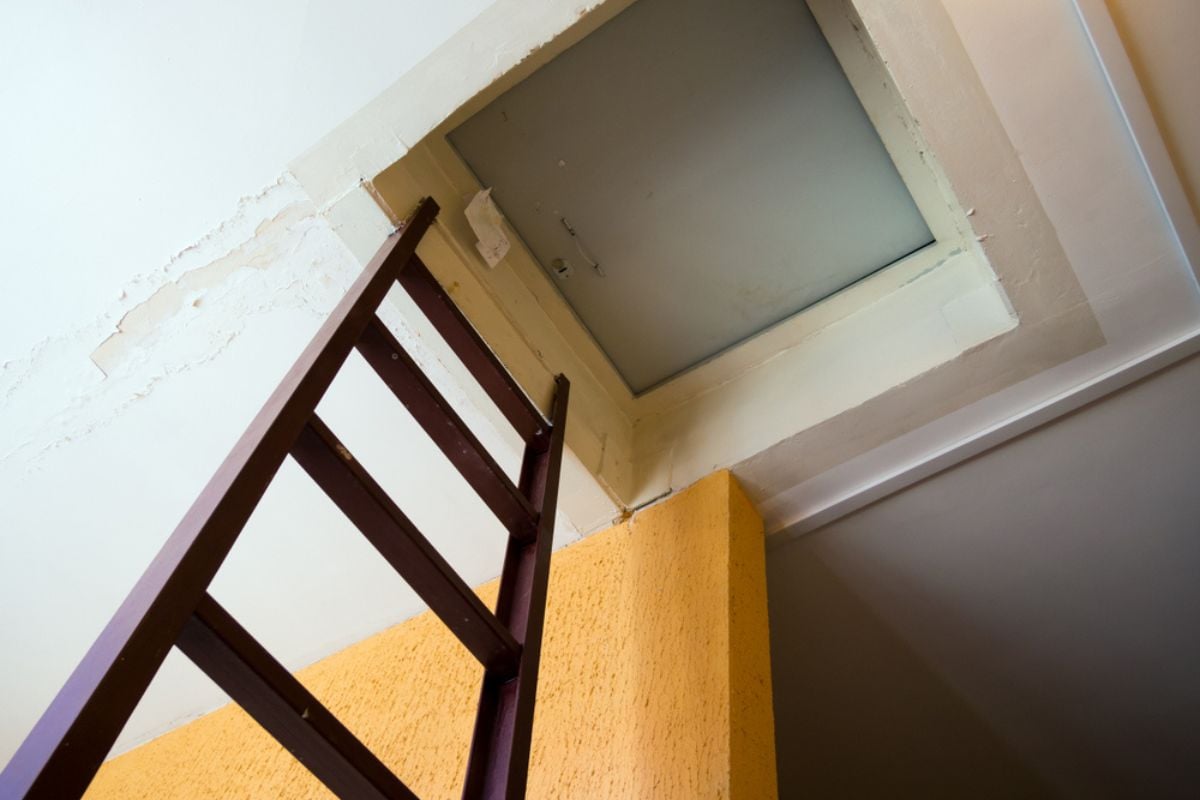
An attic you can’t reach is an inspection you can’t complete, and that’s exactly the point when sellers are dodging roof, ventilation, or insulation questions. Freshly painted hatch trim or shelves piled conveniently in front of a scuttle are small signs of big resistance. Attics tell the truth about leaks, mold, pest activity, and DIY wiring. If access isn’t easy during a showing, insist that it be made easy before you commit.
17. Crawlspace off-limits or suspiciously new plastic/sump setup

Crawlspaces reveal moisture patterns, structural supports, and the quality of past repairs. A brand-new vapor barrier draped over mud or a shiny sump without a discharge plan can be more theater than solution. You want to see continuous plastic, taped seams, proper vents or conditioning, and dry, clean piers. If you can’t see the underside of the house, you can’t see the risks you’re about to buy.
16. Visible mold/mildew in closets, behind furniture, or on registers
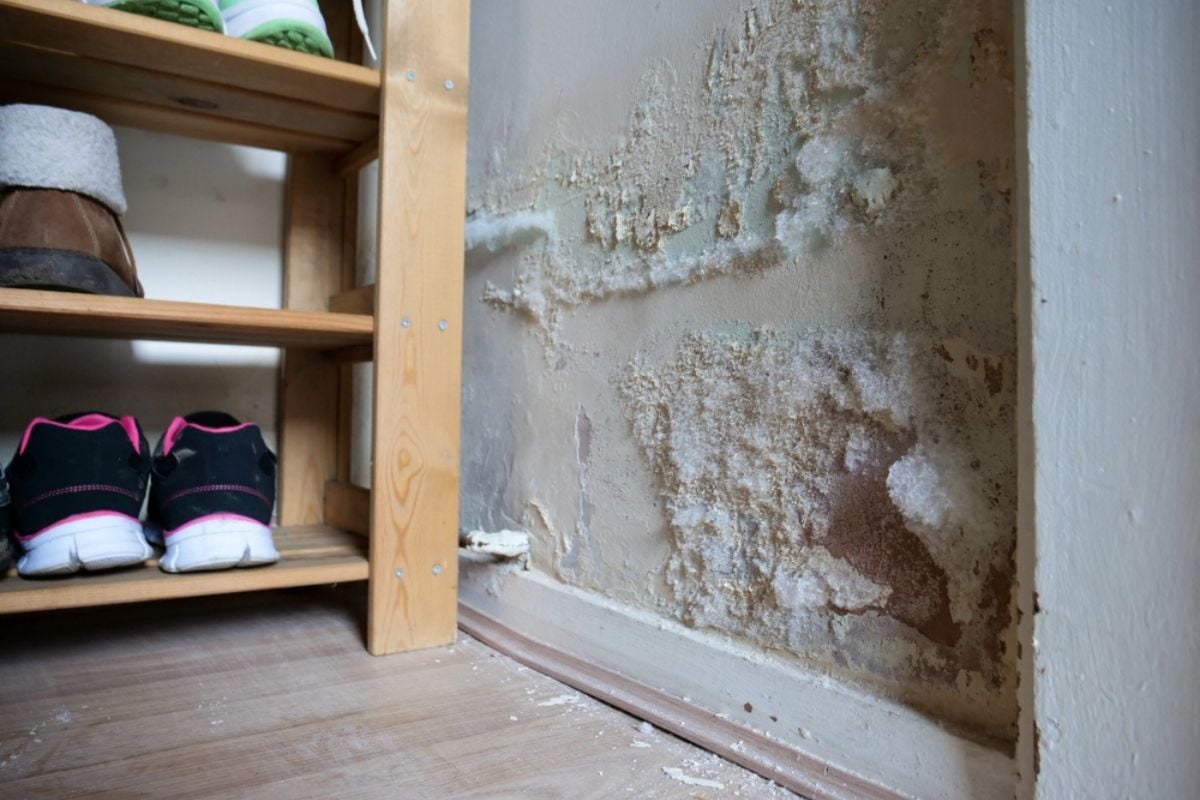
Mildew blooms where air is still and humidity is high, so growth in closets and behind big furniture signals poor ventilation or building envelope issues. Blackened supply registers or fuzzy bathroom corners aren’t just gross; they point to a moisture source that may be systemic. Open every closet and move a few hangers—musty air is a giveaway. Cleaning is easy; removing the cause is the part that affects value.
15. Fogged double-pane windows, soft sills, or peeling exterior paint
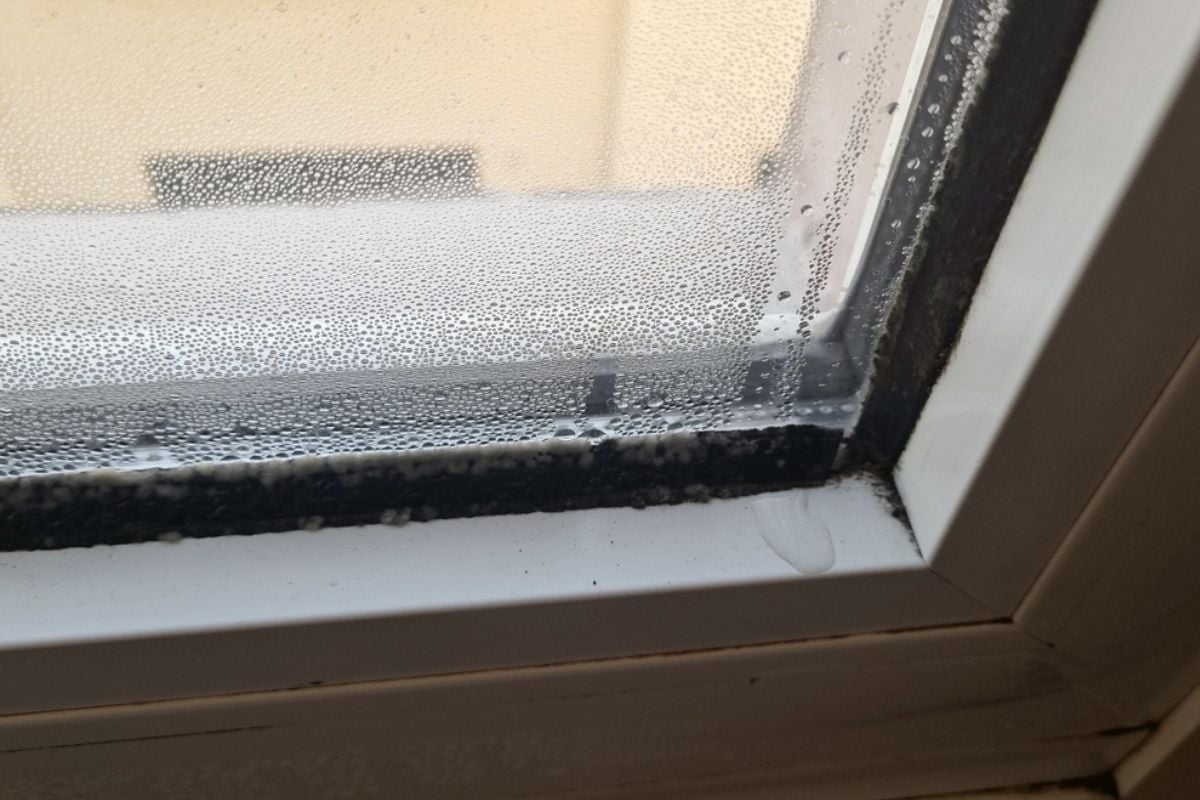
Condensation trapped between panes means failed window seals, which reduces efficiency and can spread rot to surrounding wood. Press window sills and trim with a fingernail—spongy equals saturated. Peeling paint, especially near horizontal surfaces, often follows prolonged wetting. Replacement or repair costs add up fast, and appraisers notice envelope weaknesses when comping the house.
14. Flip-grade finishes: uneven transitions, quarter-round gaps, painted outlets
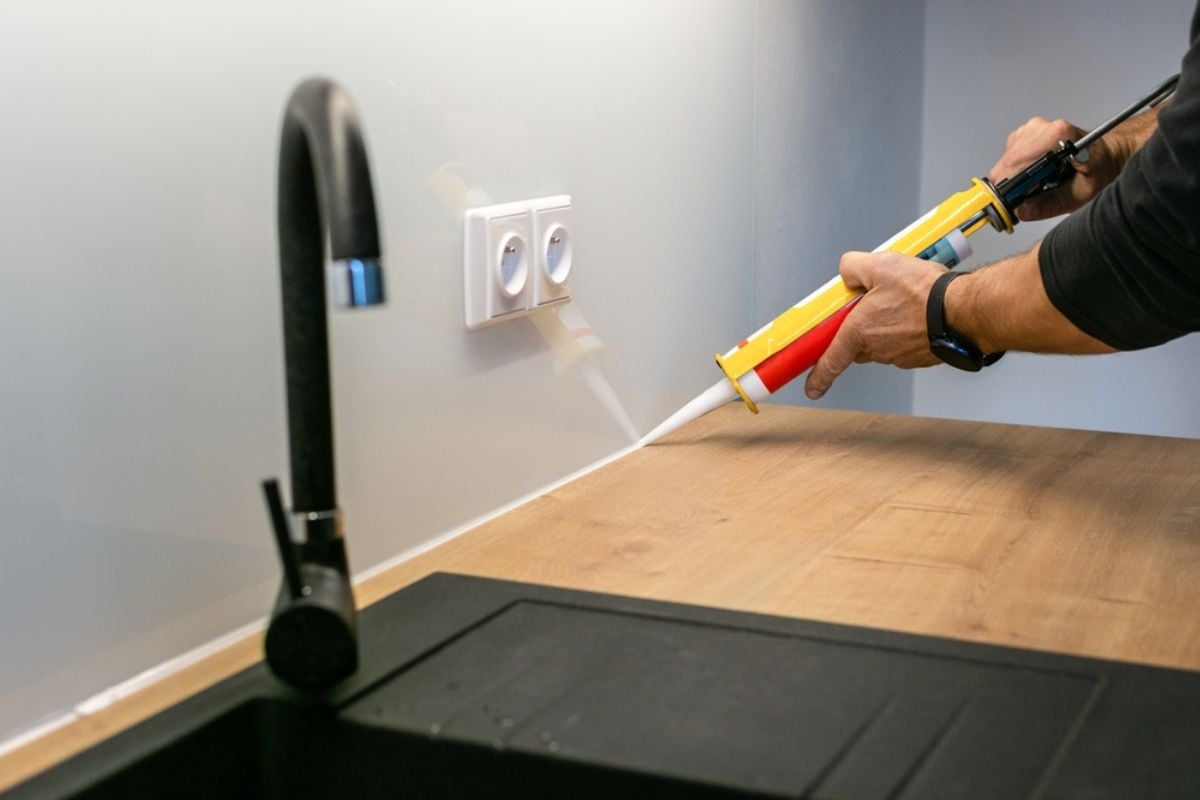
Quick flips often shine in photos and fall apart at your feet, where the details live. Lumpy flooring transitions, baseboard gaps filled with caulk instead of carpentry, and paint sprayed right over outlets or hinges scream hurry, not quality. Run your hand along cabinet faces and door edges—overspray texture and rough cuts are cheap tells. Cosmetic gloss without craft usually hides deferred maintenance underneath.
13. Dicey electrical: warm outlets, loose switches, obsolete/fuse panels

Electrical defects can be subtle in daylight but expensive and dangerous after closing. Put your hand near a few outlets and dimmer switches—warmth means resistance, and resistance means risk.
Look for a tangled or unlabeled service panel, fuses in older homes, or aluminum branch wiring without proper connectors. Modern buyers expect grounded circuits and GFCI/AFCI protection in wet and sleeping areas; missing basics can kill deals and insurance quotes.
12. Problem plumbing: polybutylene/galvanized, flex drains, slow fixtures
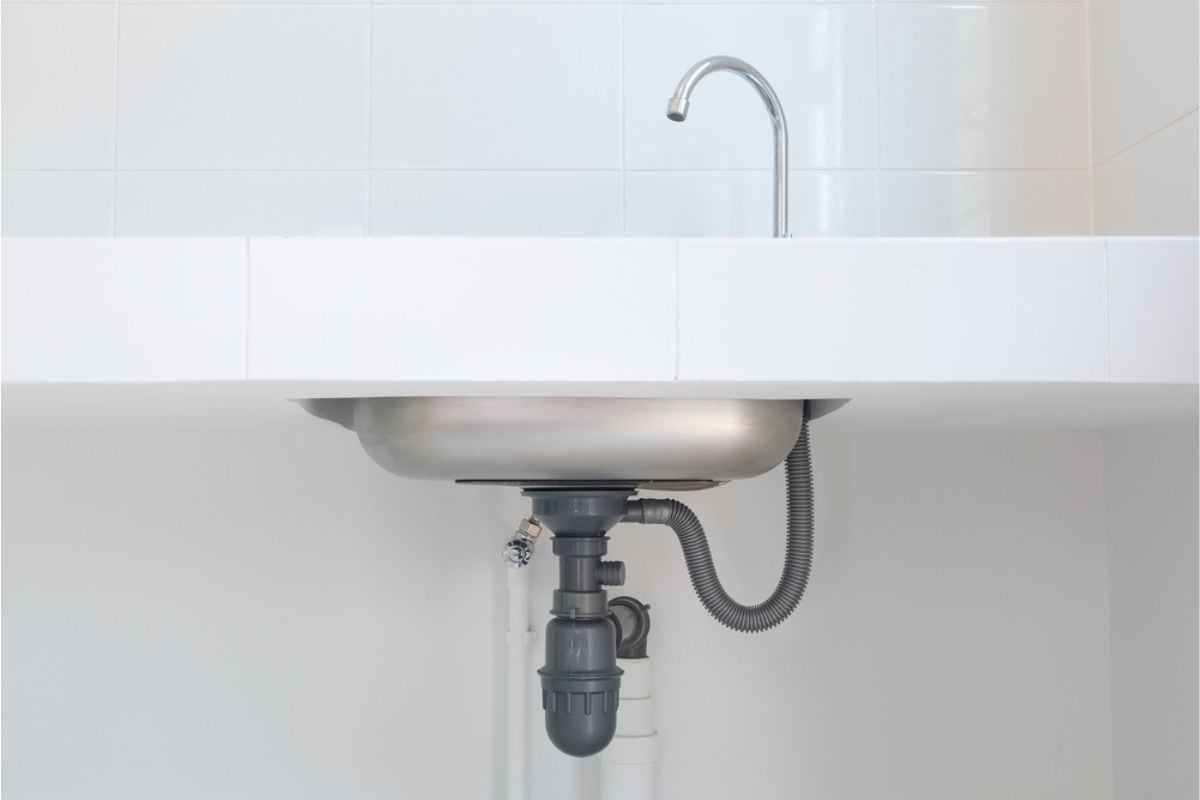
Legacy piping like polybutylene or failing galvanized reduces pressure and increases leak likelihood, and insurers frequently balk. Under sinks, accordion-style flex drains and duct-tape “solutions” are visible red flags for larger DIY habits. Run multiple fixtures at once to test flow and watch for slow drains or gurgling vents. The cheapest time to find out you need repiping is before you own the problem.

Equipment ages in dog years relative to comfort and efficiency, and missing maintenance records rarely means meticulous care. Check data plates for manufacture dates and compare to typical lifespans: 10–15 years for furnaces and condensers, 8–12 for tanked water heaters. Dusty, matted coils and rust trays tell their own story about air quality and leaks. If you can’t see documented service, assume you’ll be writing the first check.
10. Overstaging: rugs over soft spots; furniture hiding walls or vents

Staging should guide flow, not conceal flaws, so a runner placed exactly where floorboards feel spongy is more strategy than style. Oversized furniture that blocks registers or covers suspicious wall sections can hide stains, cracks, or patched drywall. Lift a corner of any unusually placed rug and peek behind art hung curiously low or wide. Good bones don’t need camouflage; problem areas often do.
9. “Bedrooms” without legal egress or too-low basement ceilings
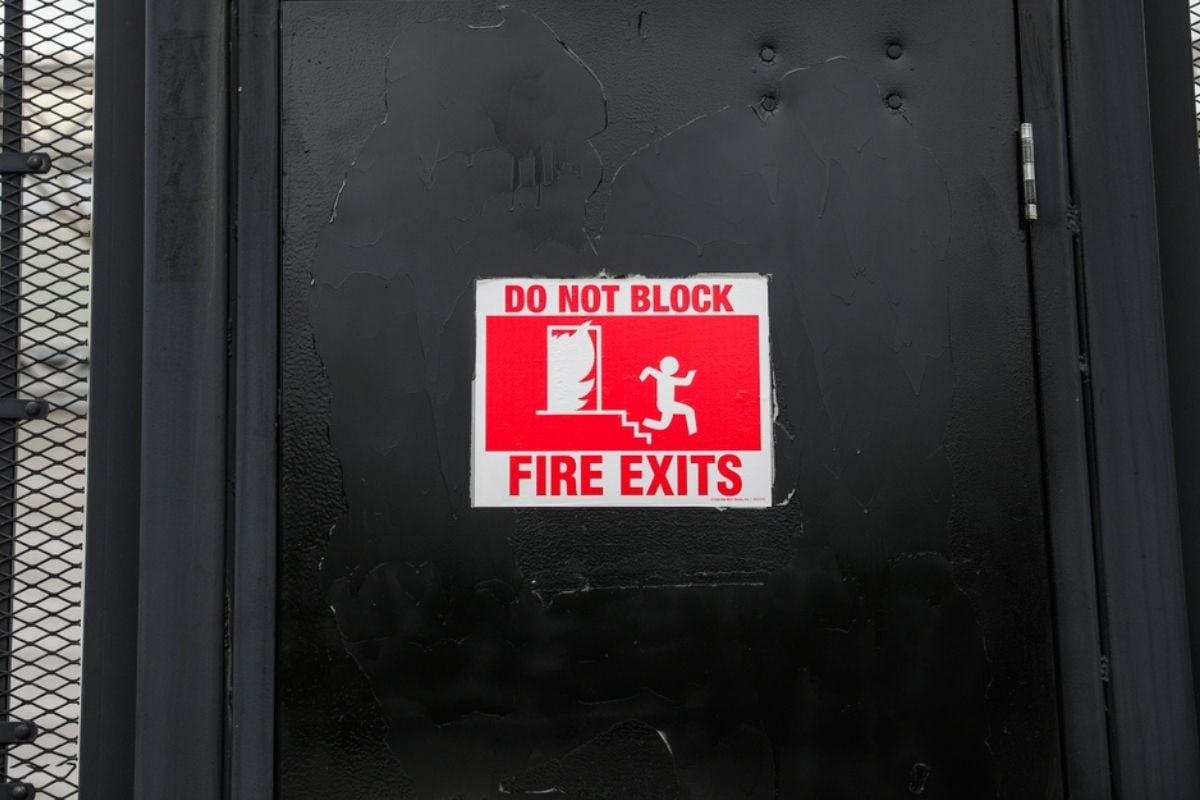
A room used as a bedroom must meet egress, ceiling height, and sometimes closet standards to count in valuation and for safety. Basements with tiny hopper windows or ceilings below code might photograph as “bonus suites” but won’t fly with appraisers—or firefighters.
Measure window openings and note sill heights; confirm ceiling height across beams, not just between them. Square footage that doesn’t meet code is lifestyle space, not marketable bedroom count.
8. Additions/enclosures that don’t tie into HVAC or look unpermitted

Sunrooms and enclosed porches that feel like different climates tell you they were appended without proper integration. Mismatched floor heights, off-center windows, and siding seams that don’t align often point to additions. Ask to see permits and final inspections; lenders and insurers do. Unpermitted square footage can’t be counted the same way in comps, which affects resale and appraisal leverage.
7. Exterior wood rot: spongy trim, deck posts buried in soil
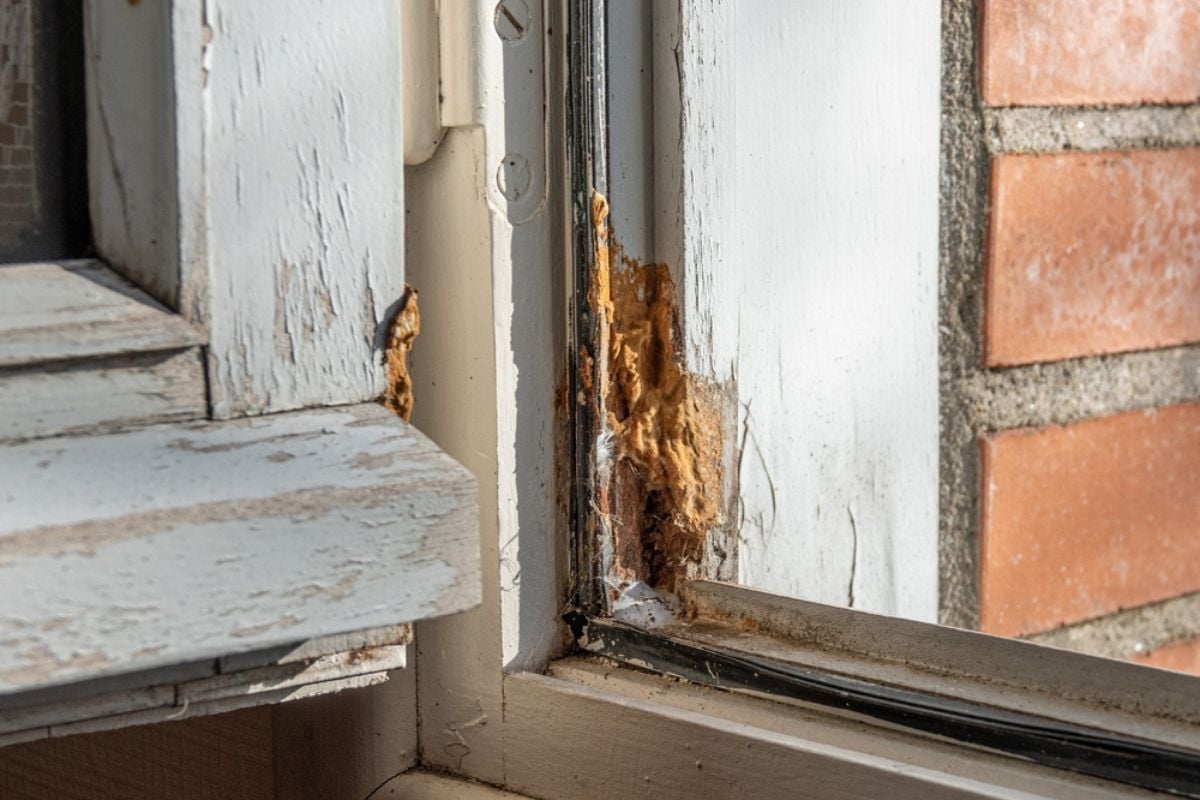
Wood wants to be dry and elevated, so trim that yields under a finger or deck posts set directly in dirt signal long-term neglect. Rot travels from the outside in and can leave structural members hollow while looking passable from a distance. Probe stair stringers, handrail bases, and fascia near gutters where water lingers. Replacing trim is routine; replacing structural deck framing and ledger connections is a different line item.
6. Termite mud tubes, frass piles, or chewed wood at sills/decks

Termites build pencil-thin mud highways on foundation walls while carpenter ants leave sawdust-like frass beneath galleries. Damage at sill plates and deck attachments is especially concerning because it compromises load paths. Bring a flashlight and look along the interior foundation perimeter and under exterior steps. Pest letters and transferable warranties are valuable, but fresh mud tubes mean the story isn’t over.
5. Gutter/roofline misses: no kick-out flashing, undersized gutters
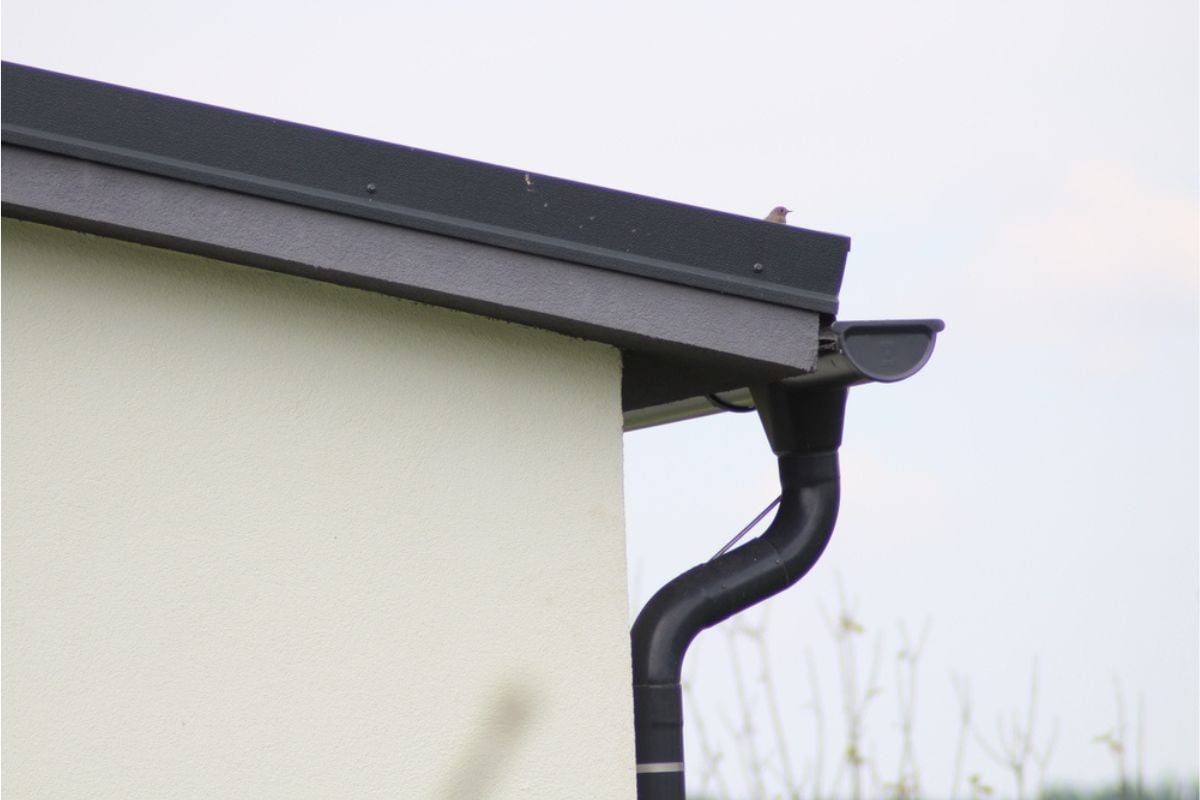
Kick-out flashing at roof-to-wall intersections prevents cascades of water down siding; when it’s missing, paint peels and sheathing rots. Gutters that are too small or poorly pitched overflow and dump water right where you don’t want it.
Look for dirty “tiger stripes” on gutters and splash patterns on lower walls as evidence. A weekend fix on metal can prevent a multi-thousand-dollar fix on wood and drywall.
4. Noise masking: sound machines or music that drowns outside traffic
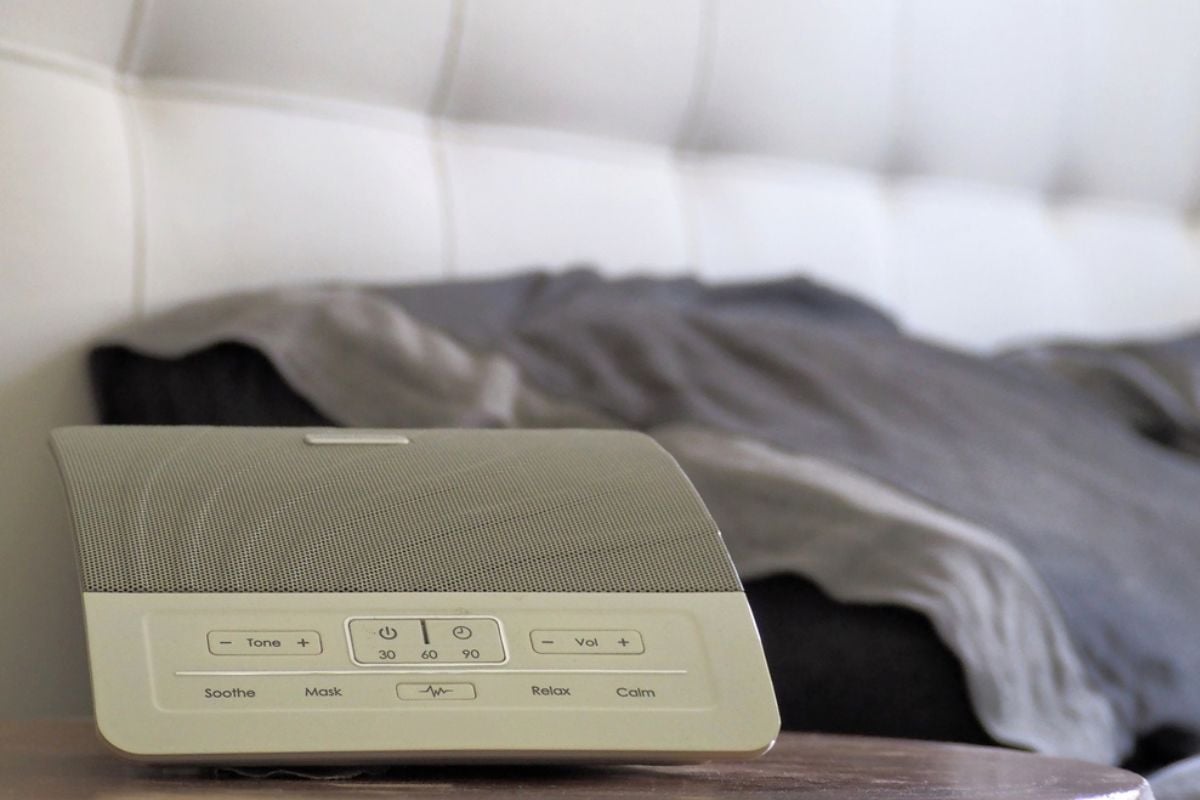
If a home sounds like a spa, ask what you’re not supposed to hear—busy roads, barking kennels, flight paths, or a neighbor’s band practice. Strategic noise camouflage during showings is more common than buyers realize.
Step outside, turn everything off, and listen for five quiet minutes, morning and evening if possible. Acoustics affect daily life and resale; you can add insulation, but you can’t move the freeway.
3. Site red flags: standing water, failing retaining walls, leaning fences

Water that lingers after dry weather means poor drainage or a high water table, both of which complicate landscaping and foundations. Retaining walls that bulge, crack, or weep heavily suggest inadequate drainage or tie-backs.
Leaning fences can signal shifting soil or encroachment issues you’ll inherit. The lot’s behavior is as important as the house’s condition—both determine long-term stability and maintenance.
2. Listing vs. reality gaps: suspicious square footage or bedroom counts
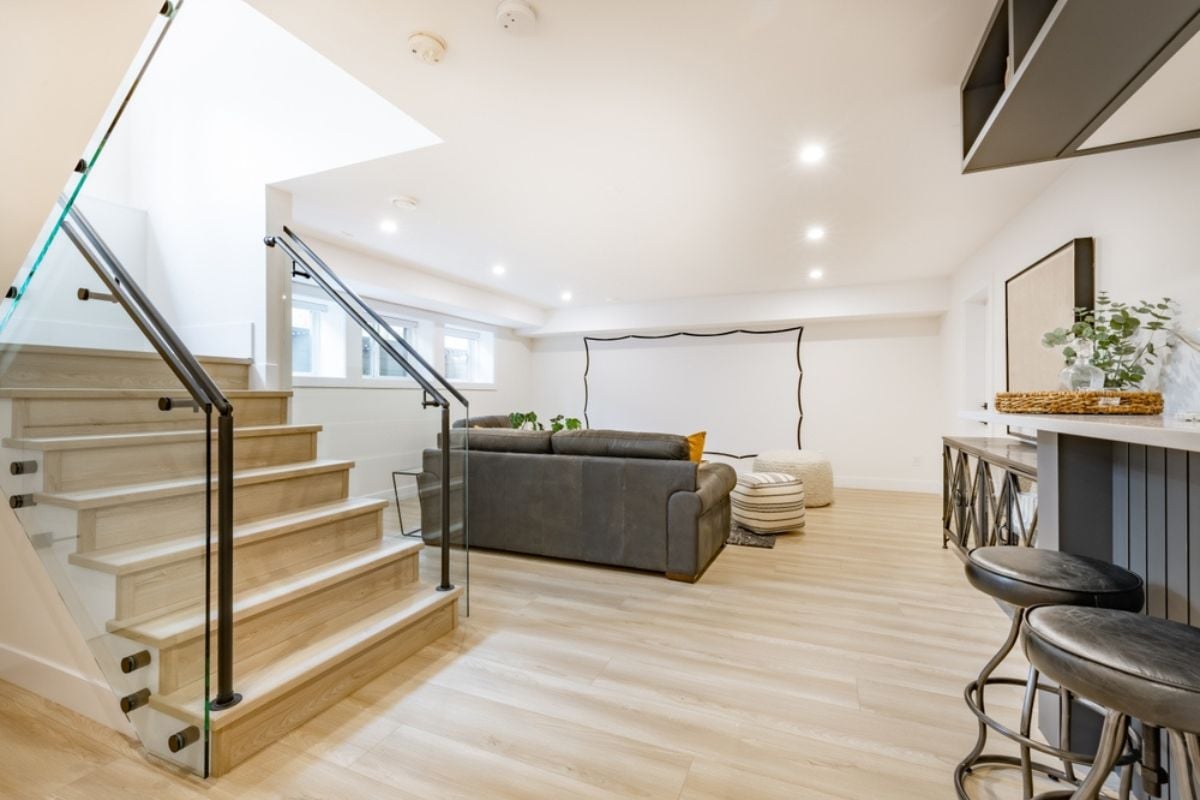
When the numbers don’t match the floor plan, you’re looking at either optimistic measuring or uncountable space. Finished attics without proper stairs or conditioned space, and basements counted as bedrooms, can inflate the listing’s appeal without supporting the appraisal. Bring a tape and sketch the footprint, checking for stair openings and double-counted areas. Discrepancies reduce comparability in comps and can derail financing.
1. Locked rooms or systems “not available to view today”

Any critical space off-limits during your visit—mechanical rooms, garages, or a mysteriously locked bedroom—should slow you down, not speed you up. Sellers may have practical reasons, but you need transparency to price risk. Make access a condition of your offer and schedule a second look with the inspector present. If you can’t see it, you shouldn’t be expected to pay for it as if you had.






